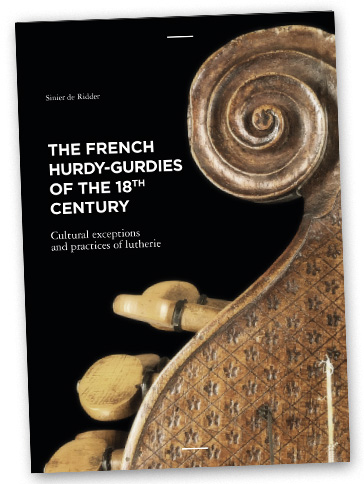 |
|
|
During the 18th century in France, the hurdy-gurdy aroused great enthusiasm. Paris was the cultural and
social capital that influenced the whole of Europe, and luthiers were faced with an ever-increasing
demand for their instruments. In these pages, we propose to unveil a large number of these instruments,
from the most sumptuous to the most modest, some authentic, some copies, and some counterfeits...
24cm x 17 cm, 54 pages, more than 30 instruments, numerous color photos, soft cover, 40 €.
To order, contact: Sinier de Ridder |
|
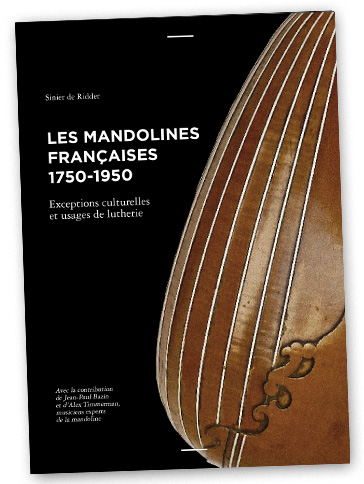 |
|
|
Whether it was "Neapolitan" with "4 courses", or "Milanese" with "6 courses", it is the French mandolin
that we wish to present in this book. Two musicologists, virtuosos and mandolin historians, Jean-Paul
Bazin and Alex Timmerman, have agreed to accompany us on our journey.
On sale from the author for €50 + postage (€10 for France, €15 for Europe, €20 for the rest of the
world). A full-colour 84-page book, showing over 75 instruments. An English translation is available on
request. To order, contact: Sinier de Ridder |
|
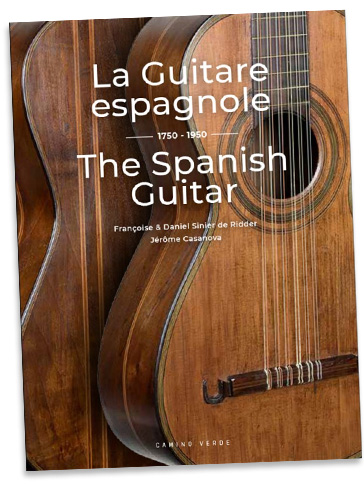 |
|
|
This book written by Francoise de Ridder, Daniel Sinier and Jerome Casanova recounts the history of the Spanish guitar since its origins until 1950. Ninety-five historical instruments are presented, never seen for the most part, modest or luxurious, typical of an era, a repertoire but especially a country and a culture. We see in particular the guitars of Durán, Sanguino, Pagés, Benedid, Pernas, Torres, Santos Hernandez, Fleta. Françoise de Ridder, Daniel Sinier and Jérôme Casanova share their passion and years of experience. To order, contact: Sinier de Ridder |
|
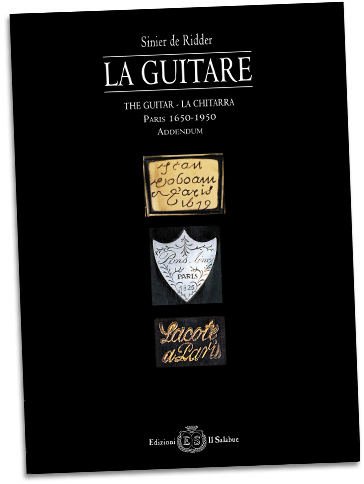 |
|
This book aims to put an update, complement the previous volume on guitars made in Paris from 1650 to 1950. Since we wrote this book, a decade has passed and some instruments have come back to us for assessment, maintenance or repair. In addition, instruments previously unknown to us have been brought to our workshop for expertise or restoration. In other words, we have been able to examine new instruments as well as deepen our understanding of ones we knew. In this context, it seemed an update to our previous publications was called for, so we could share what these new or returning instruments have taught us. |
|
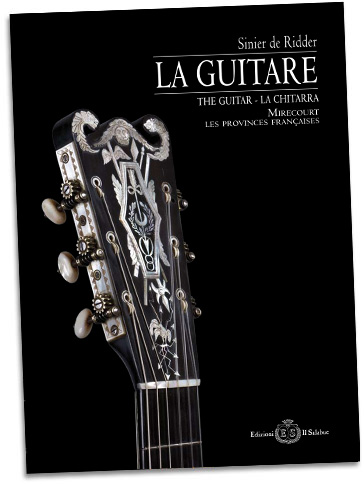 |
Altimira, Aubry Jacques, Aubry-Maire, Beau Simon, Bonnel Joseph, Breton François, Brugère François, Cabasse-Visnaire, Calot Joseph, Charpentier Auguste, Coffe-Goguette, Collin Hyppolite, Deleplanque Gérard, Denis Nicolas, Derazey Honoré, Didier Nicolas, Grobert Nicolas, Lajoue, Lambert, Leblanc Claude, Marcard Pierre, Mast Jean Laurent, Mauchant frères, Mauchant-Rouvier, Nicolas Didier l'Aîné, Otte Charles, Petitjean, Pons César, Roudhloff fils, Roudhloff François, Salomon Jean François, Thibouville-Lamy Jérome, Thouvenel, Tranchet, Vissenaire Nicolas. |
After the volume on Parisian guitars, we wished to pay tribute to luthiers of other regions of France and their talents. During our 40-year career, we have examined guitars made in Lille, Lyons, Troyes, Toulouse and Bordeaux, but mostly a considerable number of guitars made in Mirecourt and its area. Mirecourt is a small village in the Vosges area where in 1732, the Duke of Lorraine created a "charta of corporation" to regulate the professional uses of an activity in full development. Often anonymous, based on more imaginative than luxurious constructing techniques, instruments made in Mirecourt are appreciated the world over and have been able to impose their particular style. We tried to describe the social and professional functioning of a region entirely dedicated to the valorisation of one product: lutherie. We felt like telling how those poor men in the rural - but already industrious - Vosges set, starting in the 18th century, a remarkable professional system controlling in an autonomous way each stage of the construction of instruments; from the wood trade to the apprenticeship of the young, the finishing, the set-up and the sale of instruments and their accessories, by taking advantage of a solidarity network of travelling salesmen and dealers who sold the finished instruments to the most prestigious workshops in France and abroad. We were touched by these luthiers, who, to answer an ever growing demand, constructed thousands of musical instruments which were not signed, leaving this care to the dealers or to their colleagues established in large cities. They have widely contributed to the spreading of French lutherie by the quality of their instruments, even if, for commercial reasons, they preferred to remain modestly hidden in a comfortable family
anonymity. It is their guitars we would like to display here. |
|
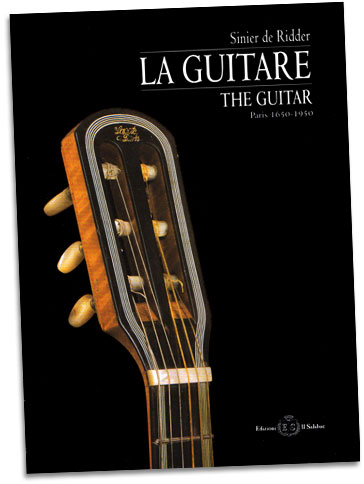 |
Robert Bouchet Jean Joseph Coffé Gaudet pour Lucien Gelas Joseph Gérard Julian Gomez Ramirez Nicolas Grobert Huel Charles Jacquot René Lacote Jean Nicolas Lambert Étienne Laprévotte François et Nicolas Lupot Mario Maccaferri pour Selmer Nicolas Mareschal Guillaume Martin Pierre Michelot Olry Ory César Pons Joseph Pons Louis David Pons Renault & Chatelain Edmond Saunier Selmer Joseph Serdet Charles Valance Alexandre Voboam Jean Voboam Jean-Baptiste Vuillaume |
|
The guitar is probably one of the world's widely-played musical instrument, as well as the most frequntently produced. |
|